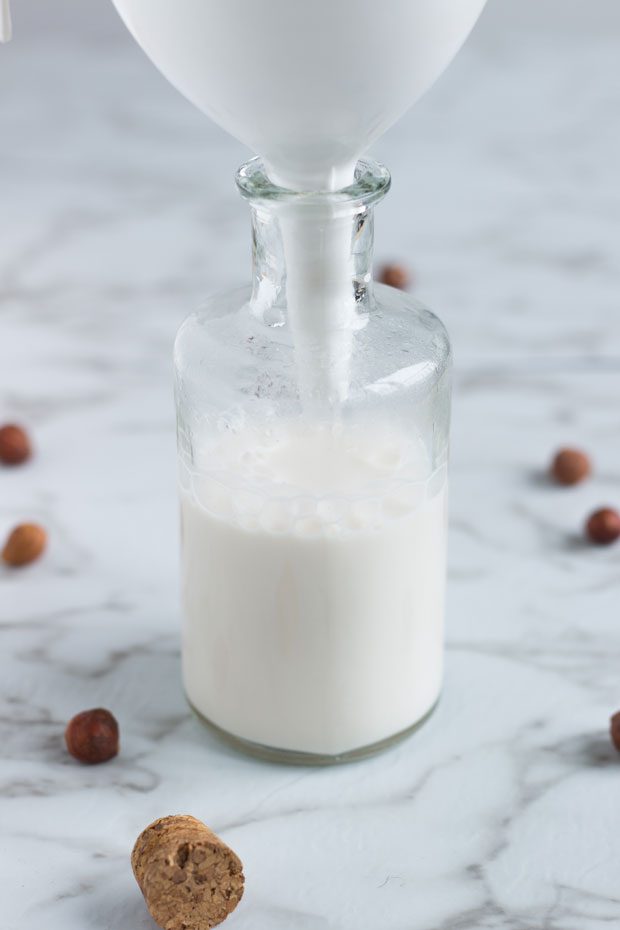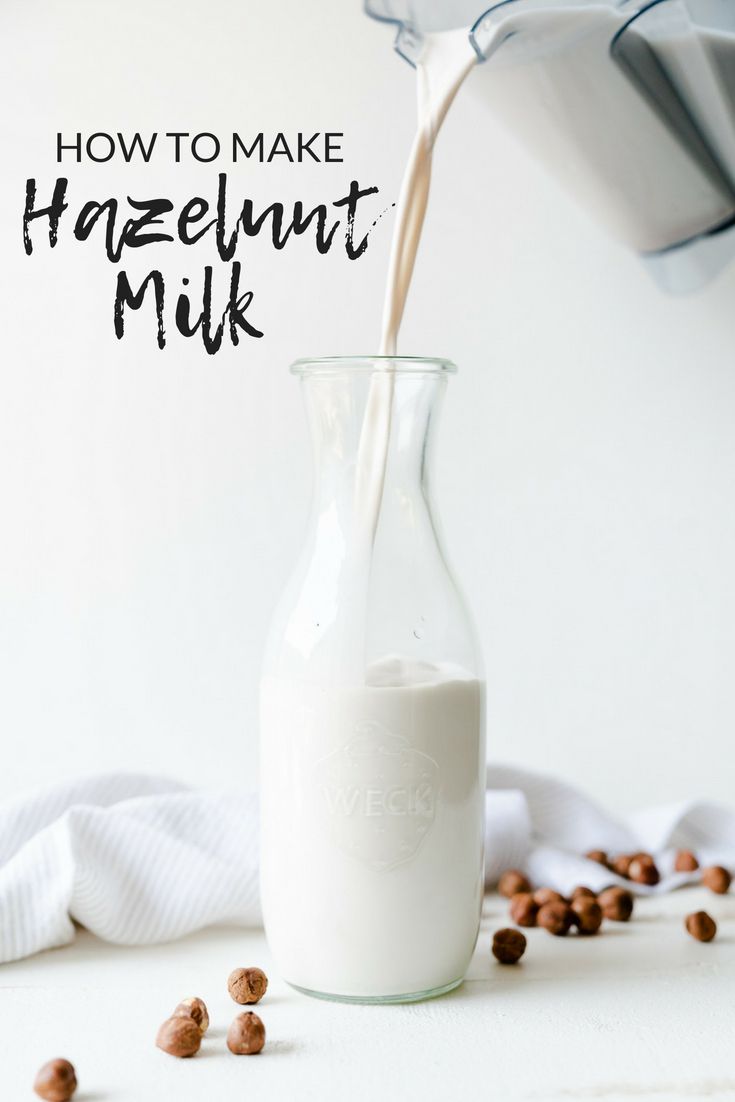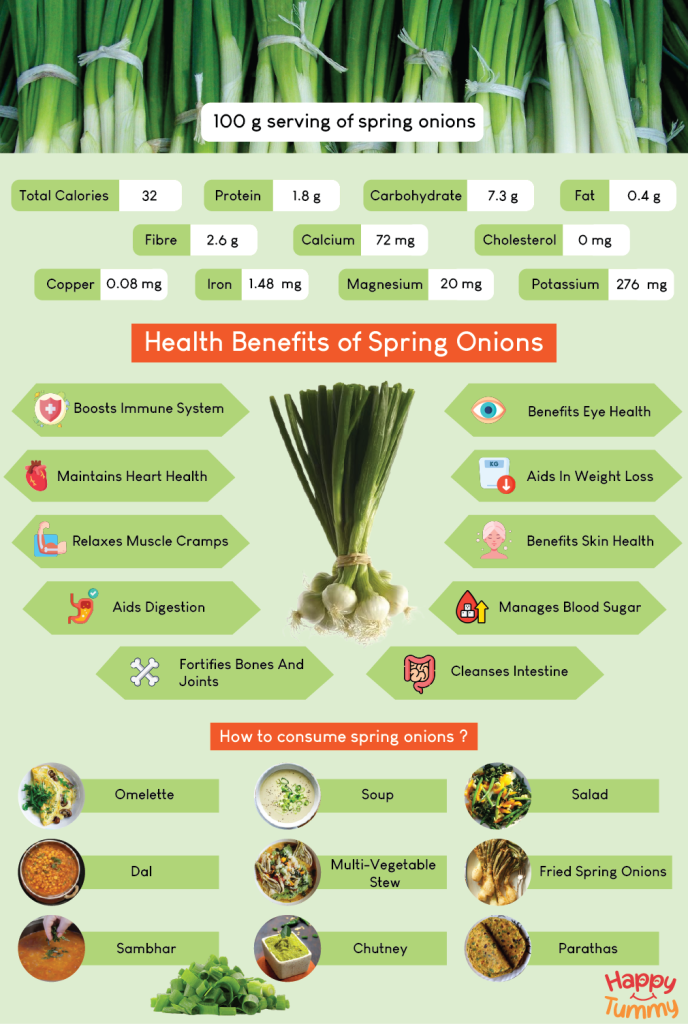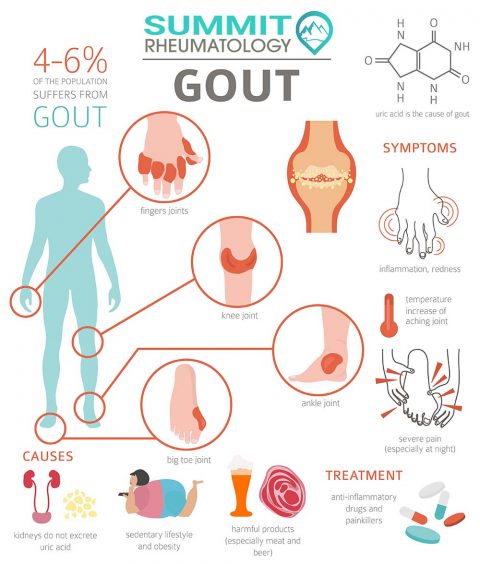Your Guide to Choosing the Healthiest Hazelnut Milk (and Why it Matters)
The aroma of freshly brewed coffee, the comforting warmth of a morning latte, the smooth texture of a smoothie – for many, these daily rituals have evolved. The gentle pour of a creamy, plant-based milk has become as ubiquitous as the dairy it once sought to replace. Among the vast array of almond, oat, soy, and rice milks, hazelnut milk has carved out a special niche. Its naturally sweet, subtly nutty flavour and luxurious mouthfeel make it a darling of discerning palates, a sophisticated choice for those seeking an alternative that truly elevates their culinary experience. But beneath this veneer of wholesome appeal lies a complex landscape, a labyrinth of ingredients that can either nourish our bodies or subtly undermine our health.
This isn’t just about avoiding dairy; it’s about a deeper quest for true nourishment. We, the knowledgeable consumers, are not content with superficial labels. We understand that "plant-based" does not automatically equate to "healthy," and "natural" can often be a euphemism for highly processed. Our journey towards wellness is one of meticulous inquiry, of peeling back the layers of marketing and peering into the very essence of what we consume. And when it comes to hazelnut milk, this journey is particularly vital, for its delicate nature makes it susceptible to a host of additives designed to enhance shelf life, texture, and flavour at the expense of our well-being.
So, let us embark on this expedition together. We will navigate the bustling aisles of the grocery store, decode the enigmatic language of ingredient labels, and unearth the secrets to choosing a hazelnut milk that genuinely aligns with our health aspirations. This is not merely a guide; it is a story of empowerment, a tale of how informed choices, even seemingly small ones like the milk in your morning brew, can collectively author a healthier, more vibrant life. Because what we put into our bodies, day in and day out, profoundly matters – impacting everything from our gut microbiome and inflammatory markers to our long-term vitality.
The Allure of Hazelnut Milk: A Deeper Dive
Before we dissect the packaged product, let’s pause to appreciate the humble hazelnut itself. The Corylus avellana, or common hazel, has been cherished for millennia, its rich, buttery nuts a staple in diets across the Mediterranean and beyond. From ancient Roman feasts to modern-day confectionery, the hazelnut’s distinct flavour profile and impressive nutritional bounty have secured its place as a culinary treasure.
The Hazelnut Itself: A Nutritional Powerhouse
At its core, a raw hazelnut is a marvel of nature. It is predominantly composed of monounsaturated fats (MUFAs), the same heart-healthy fats found in olive oil and avocados. These fats are renowned for their ability to help lower LDL ("bad") cholesterol, reduce inflammation, and support cardiovascular health. Beyond fats, hazelnuts are a rich source of Vitamin E, a potent antioxidant that protects cells from oxidative damage, supports skin health, and boosts immune function.
Furthermore, hazelnuts contribute a significant amount of dietary fiber, crucial for digestive health, blood sugar regulation, and satiety. They are also packed with essential minerals like magnesium (vital for muscle and nerve function, blood sugar control, and blood pressure regulation), copper (important for iron absorption and energy production), and manganese (an antioxidant that plays a role in bone health and metabolism). Polyphenols, another class of antioxidants, are also abundant, further bolstering their anti-inflammatory credentials.
This inherent nutritional density, combined with their naturally sweet and creamy characteristics, makes hazelnuts an ideal candidate for a plant-based milk. The sensory appeal is undeniable: a velvety texture that mimics dairy, a sophisticated nutty flavour that complements coffee and tea, and a versatility that extends to baking, cooking, and smoothies.
Why the Shift to Plant-Based?
The surging popularity of plant-based milks, including hazelnut, is multifaceted, driven by a confluence of health, ethical, and environmental considerations:
-
Health Concerns:
- Lactose Intolerance and Dairy Allergies: A significant portion of the global population struggles with lactose digestion, leading to discomfort. Dairy allergies, though less common, can be severe. Plant milks offer a palatable and accessible alternative.
- Perceived Health Benefits: Many consumers view plant milks as inherently "lighter" or healthier than dairy, often associating dairy with saturated fat, hormones, and digestive issues. While this perception needs careful qualification (as we’ll explore), it’s a powerful driver.
- Dietary Choices: The rise of vegan, vegetarian, and flexitarian diets naturally necessitates dairy alternatives.
-
Ethical Considerations:
- Animal Welfare: Concerns over industrial farming practices, animal treatment, and the ethics of dairy production lead many to seek plant-based options.
-
Environmental Impact:
- Sustainability: Dairy farming is resource-intensive, requiring vast amounts of land and water, and contributing significantly to greenhouse gas emissions. While plant milks also have an environmental footprint, many are perceived as having a lower impact. Hazelnuts, for instance, are often grown in diverse agroforestry systems, contributing to soil health and biodiversity.
The stage is set: a nutritionally rich nut, a delicious sensory experience, and a compelling array of reasons to choose plant-based. Yet, the journey from raw hazelnut to packaged hazelnut milk is where the story often takes a detour, sometimes veering sharply off the path of wellness.
The Unseen Labyrinth: Decoding Hazelnut Milk Labels
This is where our investigative journey truly begins. The ingredient list on your hazelnut milk carton is not merely a legal requirement; it is a meticulously crafted narrative that reveals the true nature of the product. For the knowledgeable consumer, it is the primary tool for distinguishing between a genuinely healthy choice and a cleverly disguised imposter. We must approach it with the scrutiny of a detective, understanding what each component contributes, and more importantly, what potential pitfalls it presents.
1. The Base: Hazelnuts (and Water)
This seems straightforward, but it’s perhaps the most critical indicator of quality.
- Percentage of Hazelnuts: The first thing to look for is the actual percentage of hazelnuts in the product. Many commercial hazelnut milks contain a shockingly low amount, sometimes as little as 1-3%. What does this mean? It means you’re primarily paying for water, and the manufacturer then has to add a host of other ingredients (thickeners, oils, flavourings) to achieve the desired texture, taste, and appearance.
- The Gold Standard: Aim for a hazelnut content of 5% or higher. Some premium brands will boast 8-10% or even more. The higher the percentage, the richer the flavour, the creamier the texture, and the more nutritional benefit you’ll derive from the actual nut.
- Red Flag: If the percentage isn’t clearly stated, or if "hazelnuts" appear far down the ingredient list (which is ordered by weight), be wary. It’s a strong indicator of a diluted product.
- Source/Quality of Hazelnuts: While often not specified on the label, an ideal scenario involves organically grown hazelnuts, minimizing exposure to pesticides. This is a subtle point, but for a truly knowledgeable audience, it’s worth considering when comparing brands.
2. Sweeteners: The Silent Saboteurs
This category is arguably the most pervasive and insidious health trap in plant-based milks. The natural sweetness of hazelnuts is often deemed insufficient for the average palate accustomed to sugary processed foods.
- Added Sugars (The Obvious and the Disguised):
- Common Culprits: Cane sugar, evaporated cane juice, brown rice syrup, agave syrup, corn syrup, fruit juice concentrate.
- Why They’re Problematic: These are all forms of added sugar. Regardless of their origin or how "natural" they sound, they contribute to the overconsumption of sugar, which is linked to:
- Blood Sugar Dysregulation: Spikes and crashes, increasing the risk of insulin resistance and Type 2 diabetes.
- Inflammation: Sugar is a potent pro-inflammatory agent, contributing to chronic diseases.
- Gut Dysbiosis: Feeds pathogenic bacteria and yeasts in the gut, disrupting the delicate balance of the microbiome.
- Empty Calories: Provide calories without significant nutritional value.
- The "Unsweetened" Trap: Be vigilant! An "unsweetened" label often means no added sugar, but the product may still contain a host of other undesirable ingredients like gums, oils, and "natural flavours." Always check the ingredient list, not just the front label claim.
- Artificial Sweeteners: Sucralose, aspartame, acesulfame K.
- Why Avoid: While calorie-free, mounting research suggests artificial sweeteners can negatively impact the gut microbiome, alter metabolic responses, and may even contribute to increased sugar cravings over time. Their long-term health effects are still being studied, but general consensus for health-conscious individuals is to avoid them.
- Natural Sweeteners (with caution): Dates, maple syrup, coconut sugar.
- If a tiny amount is used in a specific "dessert" hazelnut milk, it’s less problematic than industrial sugars, but still an added sugar. For daily consumption, the healthiest choice is hazelnut milk with absolutely no added sweeteners whatsoever.
3. Thickeners & Emulsifiers: The Texture Tamers (and Troublemakers)
These ingredients are added to prevent separation, improve mouthfeel, and create a consistent texture, especially in milks with low nut content.
- Gums: Gellan gum, locust bean gum, guar gum, xanthan gum.
- Function: Act as stabilizers and thickeners.
- Potential Downsides: For many, these are benign. However, for sensitive individuals, they can cause digestive issues such as bloating, gas, and abdominal discomfort. Emerging research also suggests some gums might subtly impact the gut microbiome, though more studies are needed. If you experience digestive upset after consuming plant milks, these are often the culprits.
- Carrageenan: The Absolute No-Go.
- Why Avoid: Carrageenan, derived from red seaweed, is a particularly controversial additive. While the food-grade form is supposedly "undegraded," there are significant concerns that even undegraded carrageenan can become degraded in the acidic environment of the stomach. Degraded carrageenan is a known inflammatory agent and potential carcinogen. Numerous studies, particularly in animal models, have linked carrageenan to gut inflammation, ulcers, and intestinal lesions. For a knowledgeable audience, this is a non-negotiable ingredient to avoid. If you see it, put the carton back.
- Lecithins: Sunflower lecithin vs. soy lecithin.
- Function: Act as emulsifiers, helping to blend fats and water and prevent separation.
- Sunflower Lecithin: Generally considered the better choice. It’s usually non-GMO and extracted without harsh solvents.
- Soy Lecithin: Often derived from genetically modified (GMO) soybeans and can be extracted using hexane. While the amount in plant milk is small, those avoiding soy or GMOs will want to steer clear. Phytoestrogens in soy are also a concern for some, though the amount in lecithin is negligible.
4. Oils: The Unnecessary Additions
This is another category that often undermines the inherent health benefits of plant-based milks.
- Common Culprits: Sunflower oil, canola oil, rapeseed oil.
- Why They’re There: Added to enhance creaminess, provide a richer mouthfeel, and contribute to stability, especially in products with low nut content.
- The Problem: These are industrial seed oils, often high in pro-inflammatory Omega-6 fatty acids. While Omega-6s are essential, the standard Western diet provides them in vast excess, throwing off the crucial Omega-6 to Omega-3 balance, which ideally should be around 1:1 to 4:1, but is often 15:1 or higher. This imbalance promotes chronic systemic inflammation.
- Processing: Furthermore, these oils are typically highly processed (refined, bleached, deodorized – RBD), often involving high heat and chemical solvents, which can damage their delicate fatty acid structures, creating trans fats and other harmful compounds.
- Recommendation: For optimal health, avoid hazelnut milks that contain added oils. If a product needs added oil for creaminess, it likely has too little hazelnut content to begin with.
5. Fortification: The Double-Edged Sword
Many plant milks are fortified with vitamins and minerals to mimic the nutritional profile of dairy.
- Common Additions: Calcium (calcium carbonate, tricalcium phosphate), Vitamin D (D2, D3), Vitamin B12.
- Benefits: For those following vegan or plant-based diets, fortification can be beneficial, as these nutrients (especially B12, D, and sometimes calcium) can be harder to obtain from plant sources alone.
- Concerns:
- Bioavailability: The form of the nutrient matters. Calcium carbonate, for instance, is a common fortifier but can be less bioavailable than other forms and can cause digestive issues (constipation) for some. Tricalcium phosphate is generally better tolerated.
- Vitamin D: Most fortified milks use Vitamin D2 (ergocalciferol), which is plant-derived but less bioavailable and less effective at raising vitamin D levels than Vitamin D3 (cholecalciferol). If D3 is used, ensure it’s from a vegan source (lichen-derived), as most D3 is animal-derived.
- Over-fortification: While rare, relying solely on fortified foods can lead to an accumulation of synthetic nutrients, which some prefer to avoid.
- Recommendation: If you rely on fortified plant milks for certain nutrients, choose brands that use bioavailable forms. However, a genuinely pure hazelnut milk (hazelnuts and water) allows you to control your nutrient intake from whole foods and targeted supplements.
6. "Natural Flavors": The Black Box
This term is a catch-all for a proprietary blend of ingredients that can include hundreds of chemicals, natural or synthetic.
- The Problem: "Natural flavors" can be highly processed and often contain carriers like propylene glycol, GMO-derived ingredients, or hidden sugars. They are designed to enhance or restore flavor that might be lost during processing or due to a low nut content.
- Recommendation: For true purity, aim for hazelnut milk with no "natural flavors." Let the genuine taste of the hazelnuts shine through.
The "Why It Matters" Deep Dive: Health Implications
The cumulative effect of these seemingly small additions in your daily hazelnut milk can have profound impacts on your health, particularly when consumed consistently over time. Our bodies are complex ecosystems, and every ingredient we introduce sends ripples through this intricate network.
1. Gut Microbiome Disruption:
- Sugar: Feeds opportunistic, inflammatory bacteria and yeasts, leading to dysbiosis, an imbalance in the gut flora. A compromised gut microbiome is linked to a myriad of health issues, including digestive disorders, mood disorders, weakened immunity, and chronic inflammation.
- Artificial Sweeteners: Research increasingly points to their detrimental effects on gut bacteria, altering metabolic pathways and potentially contributing to glucose intolerance.
- Gums and Emulsifiers: While generally recognized as safe, for sensitive individuals, gums can cause irritation, bloating, and gas. Carrageenan, as discussed, is a potent inflammatory agent in the gut, potentially eroding the protective mucous layer and contributing to leaky gut syndrome.
- Industrial Seed Oils: Their high Omega-6 content can contribute to gut inflammation.
2. Chronic Systemic Inflammation:
- Added Sugars: Are a primary driver of inflammation throughout the body, contributing to conditions like heart disease, metabolic syndrome, autoimmune disorders, and neurodegenerative diseases.
- Industrial Seed Oils: The imbalanced Omega-6 to Omega-3 ratio in these oils fuels chronic, low-grade inflammation, a silent but destructive force underlying most modern chronic illnesses.
- Carrageenan: Directly promotes inflammation in the digestive tract.
3. Blood Sugar Dysregulation:
- Daily consumption of hazelnut milk laden with added sugars, even in seemingly small amounts, contributes to a constant assault on your blood sugar and insulin regulation. This can lead to insulin resistance, increased fat storage, fatigue, mood swings, and significantly elevate the risk of Type 2 diabetes.
4. Nutrient Absorption and Bioavailability:
- While fortification aims to add nutrients, the presence of certain additives can sometimes interfere with optimal absorption. Moreover, relying on synthetic forms of vitamins and minerals may not provide the same holistic benefits as obtaining them from whole, unprocessed foods.
5. Long-Term Health and Disease Risk:
- Every sip of your hazelnut milk contributes to your body’s overall burden or resilience. Over months and years, the daily intake of inflammatory sugars, oils, and gut-disrupting additives can subtly but significantly increase your risk for a spectrum of chronic diseases, from cardiovascular issues and metabolic disorders to autoimmune conditions and even certain cancers. It’s the cumulative effect of these seemingly minor dietary choices that ultimately shapes our health trajectory.
Your Actionable Guide: Choosing the Healthiest Hazelnut Milk
Armed with this knowledge, you are now ready to navigate the supermarket shelves with confidence and precision. This isn’t about perfection, but about making the most informed and health-supportive choices possible.
The Golden Rules for Discerning Consumers:
- Read the Ingredient List FIRST: This is non-negotiable. Ignore marketing claims on the front of the carton. Flip it over and scrutinize every single ingredient.
- Prioritize Brevity: The shorter the ingredient list, the better. The ideal hazelnut milk will have only two or three ingredients: hazelnuts, water, and perhaps a pinch of sea salt.
- Look for High Hazelnut Percentage: Aim for brands that explicitly state their hazelnut content, and ensure it’s 5% or higher. If it’s not listed, or if hazelnuts are far down the list, consider it a red flag.
- Absolutely NO Added Sugar: This means avoiding cane sugar, brown rice syrup, agave, fruit juice concentrate, and artificial sweeteners. Opt for "Unsweetened" versions, but remember to still check the full ingredient list for other undesirable additives.
- Avoid Gums & Emulsifiers Where Possible:
- Carrageenan is an absolute deal-breaker. Avoid at all costs.
- Minimize other gums (gellan, guar, locust bean, xanthan). If a brand uses a very small amount of gellan gum to prevent separation in an otherwise clean product, it might be an acceptable compromise for some, but ideally, avoid them.
- If lecithin is present, prefer sunflower lecithin over soy lecithin.
- No Industrial Seed Oils: Steer clear of sunflower oil, canola oil, rapeseed oil, or any other refined vegetable oils. Their presence indicates a lower-quality product with potentially inflammatory fats.
- Minimal and Mindful Fortification: If fortification is present, look for bioavailable forms of calcium (e.g., tricalcium phosphate) and Vitamin D3 (preferably lichen-derived). However, the purest options will often be unfortified, allowing you to manage your nutrient intake through a balanced diet and targeted supplementation.
- No "Natural Flavors": Let the real taste of hazelnuts be the star.
The Ultimate Control: DIY Hazelnut Milk
For those who demand absolute purity, unmatched freshness, and complete control over ingredients, making your own hazelnut milk at home is the ultimate solution. It’s surprisingly simple, cost-effective, and yields a product far superior in taste and health benefits to most commercial options.
Simple DIY Hazelnut Milk Recipe:
- Ingredients:
- 1 cup raw hazelnuts (organic, if possible)
- 3-4 cups filtered water (depending on desired creaminess)
- Pinch of sea salt (optional, enhances flavour)
- 1-2 dates or a tiny drizzle of maple syrup (optional, for a hint of sweetness if desired, but best without for daily use)
- Equipment:
- High-speed blender
- Nut milk bag or fine-mesh sieve with cheesecloth
- Instructions:
- Soak: Place hazelnuts in a bowl, cover with filtered water, and soak for at least 4 hours, or preferably overnight (8-12 hours). Soaking softens the nuts, makes them easier to blend, and can improve digestibility.
- Rinse: Drain and thoroughly rinse the soaked hazelnuts.
- Blend: Combine the rinsed hazelnuts, 3-4 cups of fresh filtered water, and optional salt/sweeteners in a high-speed blender. Blend on high for 1-2 minutes until completely creamy and frothy.
- Strain: Place the nut milk bag over a large bowl or pitcher. Pour the blended mixture into the bag. Squeeze firmly to extract all the liquid, leaving behind the hazelnut pulp. (The pulp can be repurposed for baking, added to smoothies, or dehydrated to make flour.)
- Store: Pour the fresh hazelnut milk into an airtight glass jar or bottle. Store in the refrigerator for up to 3-5 days. It will naturally separate, so shake well before each use.
Beyond the Label: A Holistic Perspective
While choosing the healthiest hazelnut milk is a significant step, it’s crucial to integrate this choice into a broader understanding of holistic health.
- Context of Your Diet: Hazelnut milk, even the purest form, is just one component of your overall dietary pattern. Ensure your diet is rich in whole, unprocessed foods, diverse plant matter, and healthy fats from various sources.
- Individual Sensitivity: Pay attention to your body’s signals. Even if an ingredient is generally considered benign, you might have an individual sensitivity. Listen to how you feel after consuming certain products.
- Sustainability & Ethics: Consider the packaging (glass vs. aseptic cartons), the sourcing of hazelnuts, and the overall environmental footprint of the brands you support.
- The "Perfect" vs. "Better" Choice: In an imperfect world, striving for "better" is often more sustainable than chasing "perfect." If a perfectly clean hazelnut milk isn’t available, choose the one with the fewest and least problematic additives. Every informed decision nudges you closer to optimal health.
Conclusion: Your Health Story, One Sip at a Time
Our journey began with the simple desire for a delicious, healthy alternative to dairy, and it has led us through the intricate world of food manufacturing, ingredient science, and the profound impact of our daily choices. We’ve peeled back the layers of marketing, deciphered the cryptic language of labels, and understood why the seemingly innocuous additions in hazelnut milk can collectively steer our health story in unwanted directions.
You are no longer a passive consumer. You are an informed advocate for your own well-being, equipped with the knowledge to distinguish between genuine nourishment and cleverly packaged imitations. The choice of hazelnut milk, though seemingly small, is a powerful act of self-care. It reflects a commitment to understanding what fuels your body, respecting its intricate systems, and making conscious decisions that support vitality.
So, the next time you reach for that carton, remember the story we’ve uncovered. Choose wisely. Choose purely. And let every sip of your hazelnut milk be a conscious contribution to the masterpiece that is your health. Your body will thank you.






